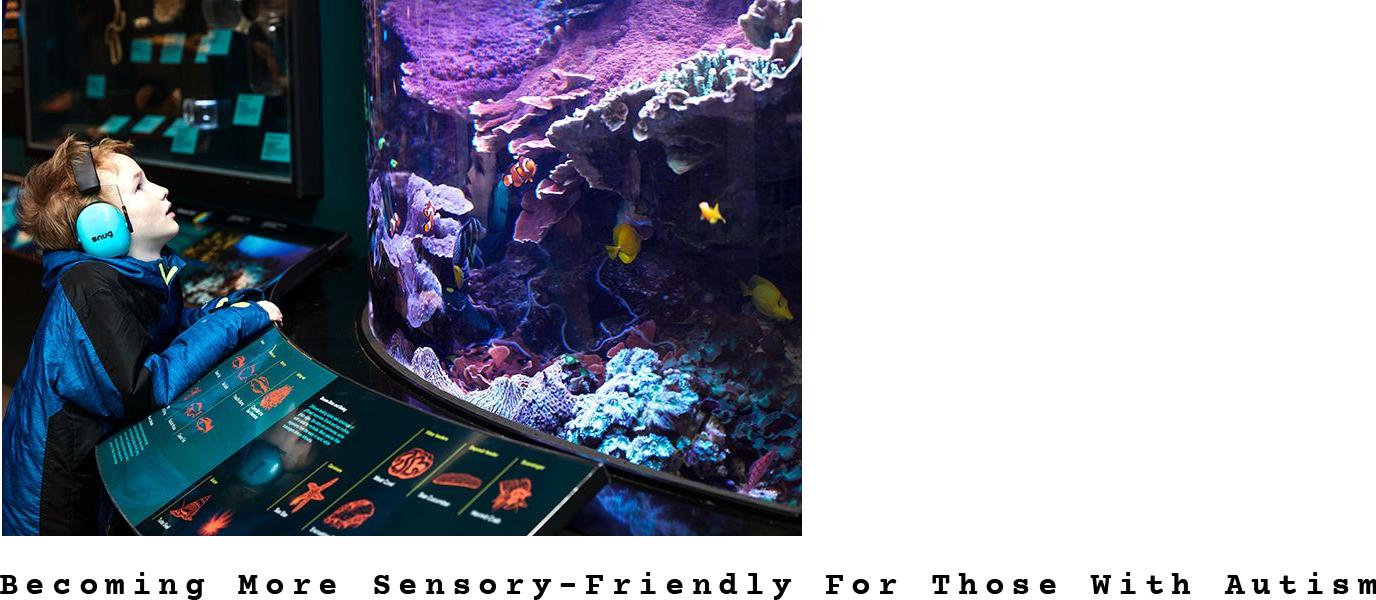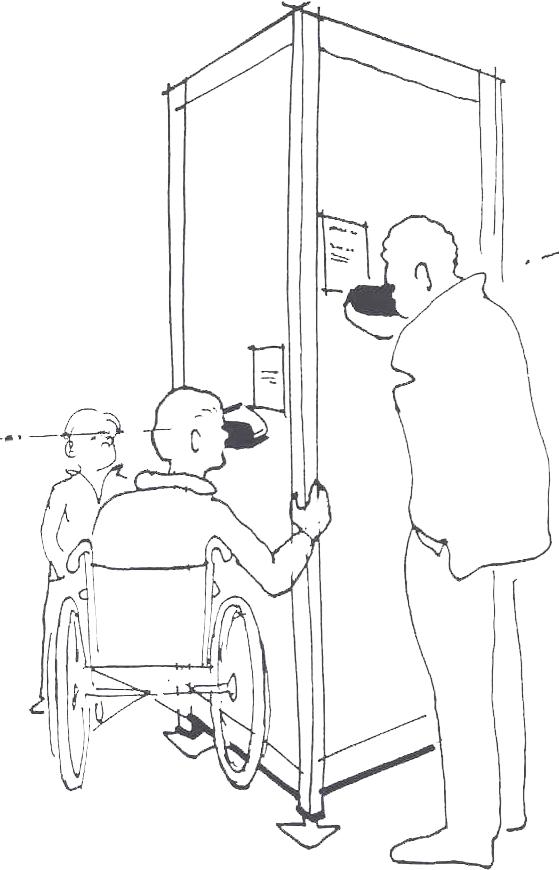
5 minute read
Accessibility
by Noah
01
ACCESSIBILITY
Advertisement
Research by Noah Fuad
Abstract
Throughout my research, it is found that accessibility in cultural spaces comes across a myriad of barriers, which prevent people with impairments to fully enjoy these venues. Museums have played an important role in combating social exclusion of the visitors with visual impairment. Social exclusion means lack of access to various social benefits to an individual or a social group (Brstilo, 2010).
I have uncovered that attempts to overcome these obstacles to social inclusion have been developed in the past decades with considerable progress in the US, the UK and a handful of European countries.
However, Malaysia is not yet among these countries, though some efforts have been carried out in terms of universal accessibility. To avoid social exclusion of visitors with any forms of phsyical,visual or cognitive impairments, the museums we design should adopt and understand the social model of disability.
Accessibility in terms of the physical aspect of space
Handicapped or Physically Impaired users
The primary barrier which physically challenged members of the community, particularly those who are using wheel chairs, find themselves having to battle against its mobility and access to museum.
People using wheelchairs find it hard to reach the vicinity of museums independently.It is worthwhile to point out that after reaching museum premises wheelchair users are confronted with parking complications. In many cases despite having special parking spaces, there was often no ramp between the road and the sidewalk.
I believe, in order for Museums to rectify this situation, it is necessary for us to modify infrastructure, building ramps and railings to accommodate the disabled.

Taking the Museum’s entrances accessibility into consideration
In a misguided attempt to accommodate the physically disabled, some museums have located wheelchair entrances far away from the regular entrance. This separation creates sentiments of exclusion for wheelchair users.
Subsequently it is a reasonable expectation that museums should retrofit or build entrances that accommodate all people, with stairs and ramps adjacent to each other or in close proximity. This will go a long way towards eliminating the stigma wheelchair users feel when asked to use a separate, hidden entrance.

Furniture Accessibility for the Handicapped & Physically Impaired
Once inside the museum, people in wheelchairs are alienated through the use of tall furniture. This height creates a sense of separation that prevents comfortable communication, as they cannot see the face of the person they talk to.
One of the roles of the museum is to educate people, hence it is imperative for wheelchair users to be able to communicate without feeling excluded.

Accessibility for the Visually Impaired
Audio Descriptions
Museum visitors are expected to rely heavily on vision to access exhibits, which may be behind glass and rarely available to touch, traditionally making museums inaccessible to visitors with visual impairments.
Therefore I find having audio desripctions crucial. It seeks to make visual information accessible using verbal description. It can be delivered live by an audio describer or trained guide, or in recorded form, either online or through a listening device in the museum.
Practitioners face important questions regarding not only which content within a museum should be selected for description but also what the salient features of a particular piece may be and how to address them. We must decide whether to describe exclusively colors, shapes, and spatial content or whether to explore information that goes beyond these visual aspects such as meaning.

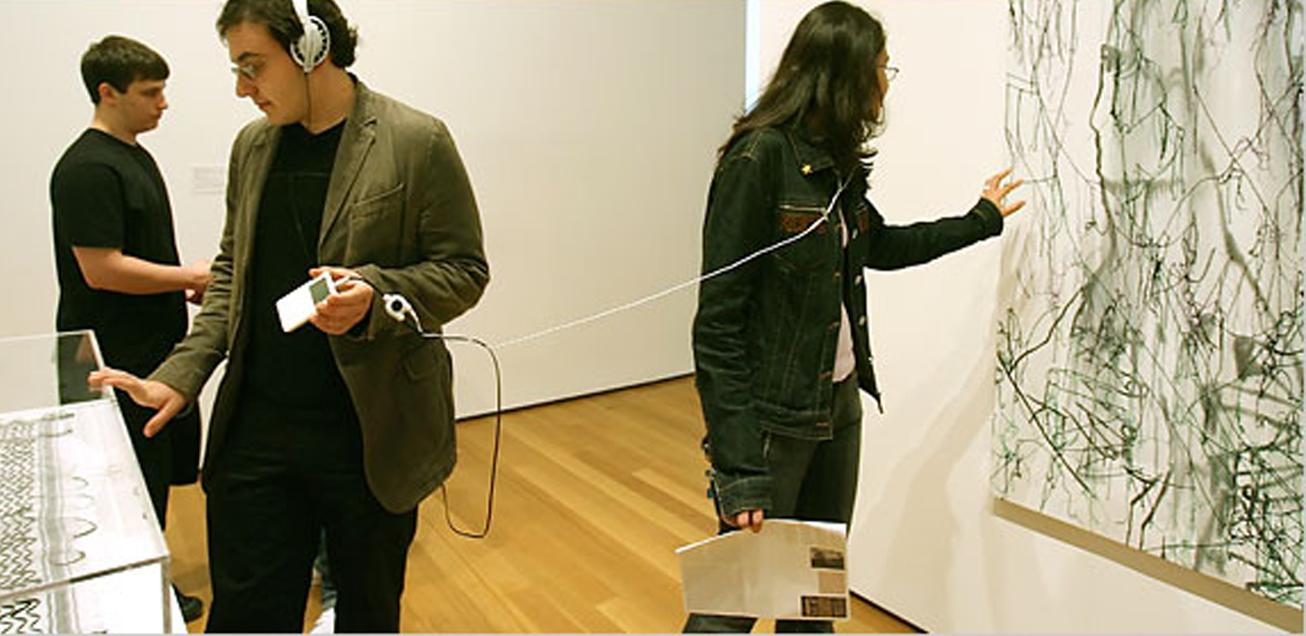
Tangible Exhibits
Museums can implement different interactive technologies to communicate their exhibitions; however, it turns out that in most cases, information is not accessible to all members of the public. An example of a tangible exhibit is the design of a tangible user interface to enhance accessibility in interactive exhibitions, specifically for the case of visitors with visual impairments.
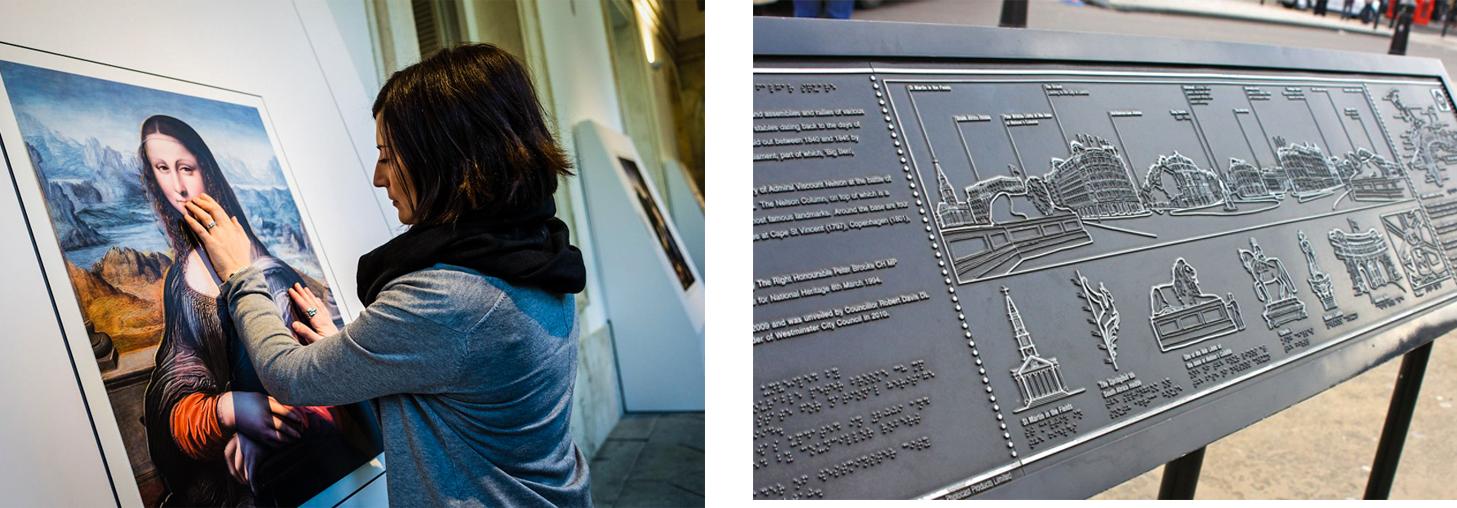
Exhibitions and art that emphasize on touching sensations allows the visually-impaired to experience the art.
Accessibility for the Hearing Impaired
The deaf are another group of people with disabilities who encounter accessibility challenges during their visits to museums. Most museums do not offer sign language interpretation, which makes communication with the deaf almost impossible. Museum visitors are always keen to know more about exhibits. Generally they do this by asking questions and reading text labels.
The deaf often find themselves helpless as museum staff do not understand sign language. Museums should hire sign language interpreters who can assist in these cases. The employee may also be responsible for guiding deaf visitors around, showing them the exhibits and answering their questions.
This will provide deaf members of the community with the chance to learn about artifacts and culture from museums without being hindered by communication breakdowns.
Use of signage, graphics and icons create a universal understanding amongst users.

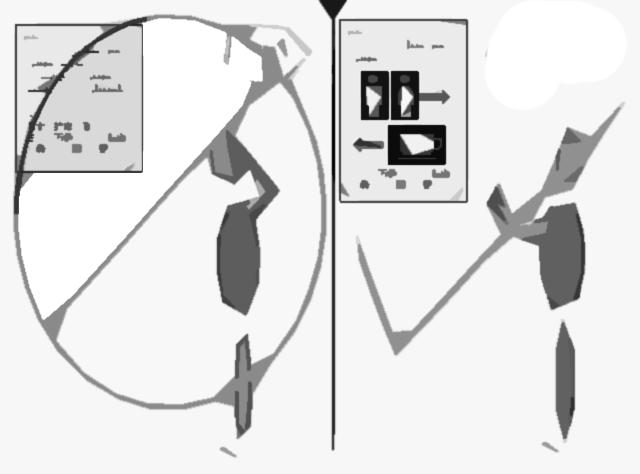
Sign language being used to describe exhibits
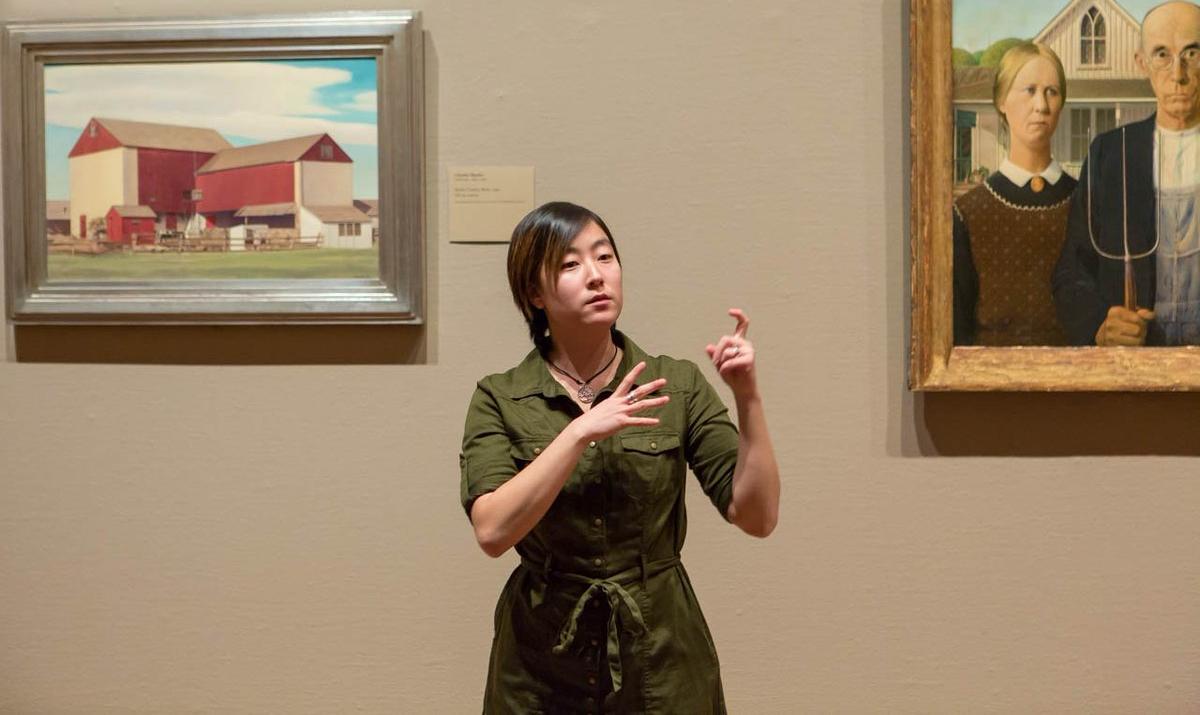
Accessibility for users with Mental Health Disorders
Considerations for the users with Cognitive Impairments
Many factors must be taken into consideration to ensure the accessibility of the exhibition text, such as legibility (font size), how the text is related to the exhibition objects, how the text interacts with the exhibition design and how the text presents itself as genre.
Text-Level
Exhibition texts should not be too long; however, there is no quantitative way to establish the exact appropriate length. To aid reading, texts should be divided into independent paragraphs with one main idea per paragraph.
Sentence-level
Sentences should be kept relatively short, and simple clauses without excessive subordination are preferable. The word order should be straightforward and sentences must not start with new or unfamiliar information. Generally, active voice is preferred to passive voice, so it.
Word-level
On word level, it is repeatedly stated that jargon should be avoided, and that simple words should be used instead. Jargon is not really explained in the museum literature, but we assume that this covers technical terminology related to museums, art, history, archaeology etc.
